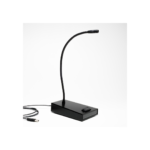Introduction
Network cards also known as network interface card (NIC), is a hardware component that enables a device to connect to a computer network. It provides a physical interface between the device and the network, allowing data to be transmitted and received.
Network cards come in various forms, including PCI (Peripheral Component Interconnect), PCIe (PCI Express), USB (Universal Serial Bus), and wireless cards. They can be built into a device, such as a computer or a printer, or added as an expansion card.
A network card typically has a unique identifier known as a Media Access Control (MAC) address. Which is used to identify the device on the network. It also supports different network protocols, such as Ethernet, Wi-Fi, Bluetooth, or cellular networks. Depending on the type of card and the device it is used with.
The difference between network cards and routers?
Network cards and routers are both important components in a computer network, but they serve different functions.
A network card, also known as a network interface card (NIC), is a hardware component that enables a device to connect to a network. It provides a physical interface between the device and the network, allowing data to be transmitted and received. Network cards are typically used in devices such as computers, servers, printers, and mobile devices.
A router, on the other hand, is a device that connects multiple networks together and routes data between them. Routers are used to connect devices on a local area network (LAN) to the internet or other networks. They typically have multiple network ports to connect to different devices. They use routing tables to determine the best path for data to take between networks.
In other words, a network card enables a single device to connect to a network. A router enables multiple devices on a network to communicate with each other and with devices on other networks.
To summarize, the main difference between network cards. Routers is that network cards are used to connect a single device to a network. While routers are used to connect multiple devices on a network and route data between different networks.
What are network cards on mobile?
A network card, also known as a network interface card (NIC), is a hardware component that allows a device to connect to a network. In the context of mobile devices such as smartphones or tablets. A network card typically refers to the wireless network adapter that enables the device to connect to Wi-Fi or cellular networks.
Mobile network cards are usually integrated into the device’s motherboard and cannot be replaced or upgraded. They support different network protocols such as 2G, 3G, 4G, and 5G for cellular connectivity. Wi-Fi protocols such as 802.11a/b/g/n/ac/ax for wireless connectivity. They also support different frequencies and bands, depending on the device and the network it is designed to connect to.
Why do routers need two network cards?
Routers typically have two network cards or interfaces for a few reasons:
Separation of networks:
The two network cards allow the router to separate the local area network (LAN) from the wide area network (WAN). The LAN side is connected to the devices within the local network. While the WAN side is connected to the internet or another external network. This separation helps to protect the local network from external threats, such as malware or unauthorized access.
Routing of data:
The two network cards allow the router to receive data on one interface. Then route it to the other interface based on the destination address. This process is known as routing, and it enables the router to direct data to its intended destination on the network.
Network redundancy:
Having two network cards can also provide network redundancy, which means that if one network card fails, the other can take over and maintain the network connection. This can improve the reliability and availability of the network.
Multiple networks:
Routers can also be used to connect multiple networks together. For example, a router might have one network card connected to a LAN and another network card connected to a separate LAN or VLAN. This allows the router to route data between the two networks, enabling devices on each network to communicate with each other.
In summary, routers typically have two network cards to separate the LAN from the WAN, route data between networks, provide network redundancy, and connect multiple networks together.
Do I need a network card for a computer?
Yes, you need a network card (also known as a network interface card or NIC) to connect your computer to a network. The network card is a hardware component that provides the physical interface between your computer and the network, enabling data to be transmitted and received.
Most modern computers come with a built-in network card, either as a separate expansion card or integrated into the motherboard. The network card supports different network protocols, such as Ethernet, Wi-Fi, or Bluetooth, depending on the type of card and the network it is designed to connect to.
Without a network card, your computer would not be able to connect to a network or access network resources, such as the internet, printers, or file servers. If your computer does not have a built-in network card, you can add one by installing a network card in an available expansion slot or using a USB network adapter.
In summary, a network card is essential for connecting your computer to a network, and most modern computers come with a built-in network card.
Also read:- How is skin lightening done?
Reasons To Hire Someone To Take My Online Class For Me
Conclusion
In conclusion, network cards are hardware component that enables a device to connect to a network. While a router is a device that connects multiple networks together and routes data between them. Network cards are essential for connecting devices to a network. While routers are essential for managing the flow of data between different networks. While network cards are used to connect a single device to a network. Routers are used to connect multiple devices on a network and route data between different networks. Both network cards and routers play critical roles in modern computer networking. Are essential for enabling communication and data transmission between devices on a network.










